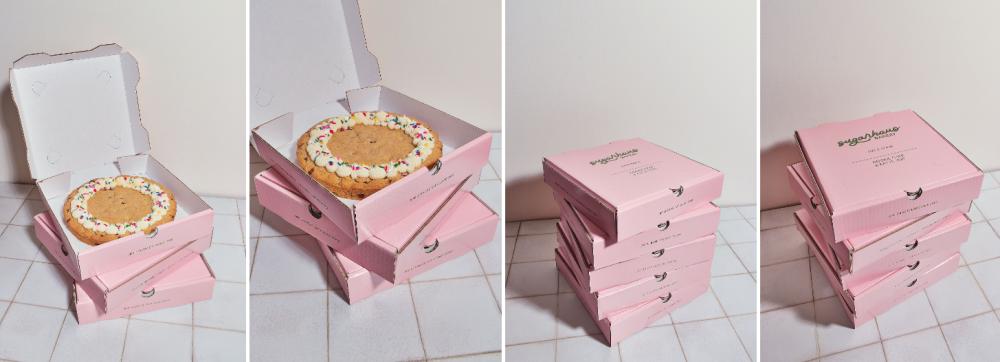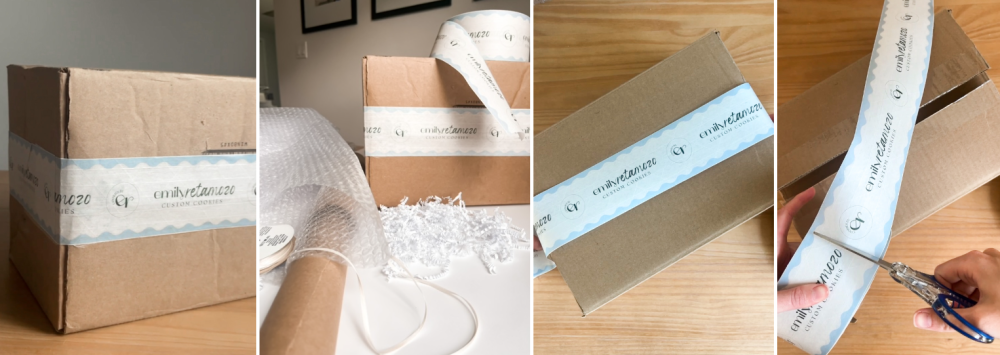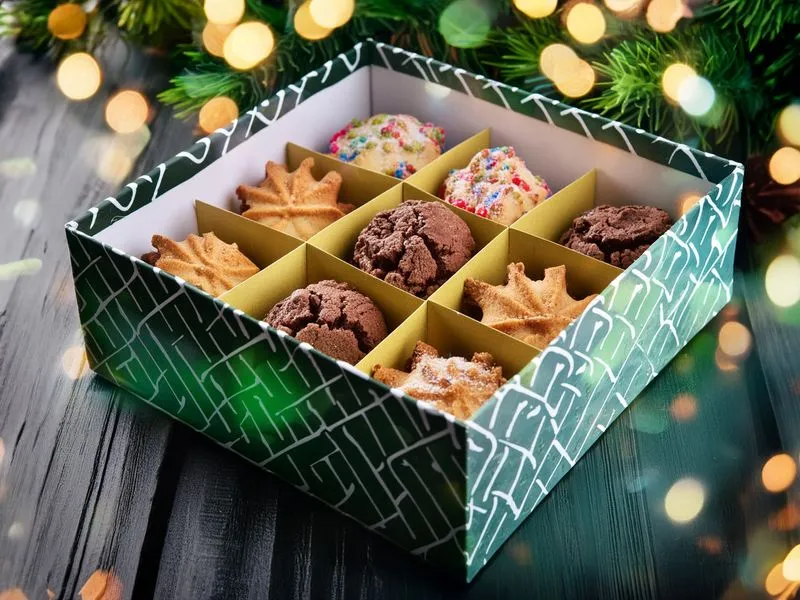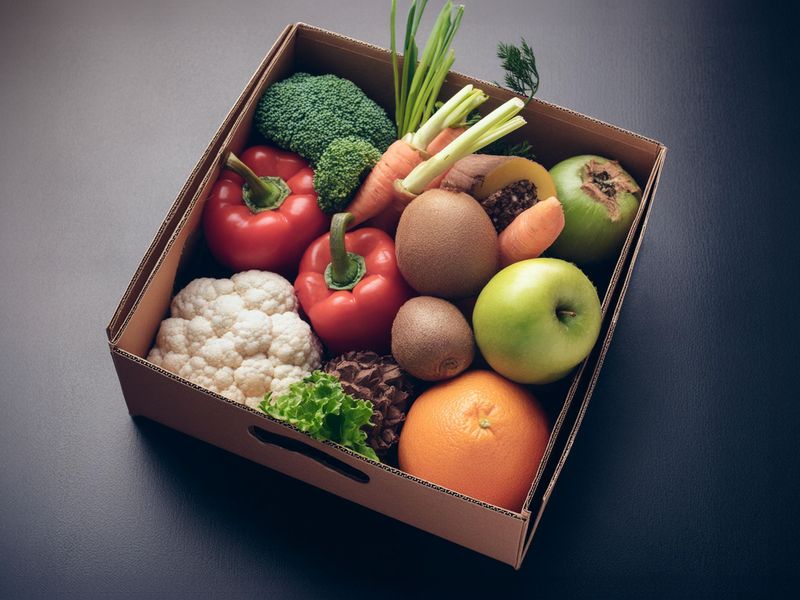Learn about food packaging, why it's important, and the best materials to package food.
Food packaging keeps products safe, fresh, and visually appealing. It protects contents from contaminants, ensures longer shelf life, and provides essential branding opportunities. However, with evolving standards and consumer expectations, packaging must also address sustainability, safety, and regulatory compliance.
Table of Contents
Why Is Food Packaging Important?


Protein Bar Boxes by Acorn Bar
Packaging plays a huge role in the food business. It’s not just a container as some would think. Below are just some of the reasons why food packaging is so important.
- Protection & Preservation: Food packaging shields products from physical, chemical, and biological harm. Materials such as plastics, glass, metals, and paper each serve unique protective functions but vary in recyclability and environmental impact.
- Compliance & Safety: Food-grade packaging materials should meet regulatory standards to prevent contamination. Look for options that comply with FDA or equivalent food safety certifications.
- Sustainability: Sustainable packaging is now crucial. Options like biodegradable, compostable, or recyclable packaging align with eco-conscious brand values, which many consumers favor. For example, cardboard and paperboard are widely recyclable, while bioplastics are compostable in industrial settings.
- Brand & Marketing: Packaging serves as an on-shelf representative of your brand, conveying your values and creating a memorable experience for consumers. Custom designs and branding elements—such as logos, color schemes, and unique packaging shapes—differentiate products on retail shelves and communicate brand identity.
Types of Food Packaging


Caviar Boxes and Labels by Golden Reserve Caviar
There are different types of packaging you can use — each one having its purpose.
- Flexible Packaging (Pouches, Plastic Wraps): Flexible packaging is lightweight and space-efficient, often used for snacks, frozen foods, or single-serve items. Plastic pouches and wraps protect against moisture but can have limited recyclability unless made from specific recyclable materials.
- Rigid Packaging (Cans, Glass Jars, Boxes): Rigid packaging provides structure, ideal for preserving shape-sensitive products. While glass is recyclable and offers a premium look, cans provide an excellent barrier against light and oxygen for long-lasting preservation.
- Paper-Based Packaging (Cardboard, Paperboard): Biodegradable and widely recyclable, paper-based options work well for dry goods. However, they’re not ideal for moisture-prone items unless laminated or coated, which can affect recyclability.
Food Packaging Materials


Pizza Boxes for Cookie Cakes by Madkind Design Studio
What are some of the packaging materials you can use for your food business? There are many options to choose from. Below are just some of the most popular packaging solutions.
- Food Pouches - Food pouches are great for packaging food items, especially those that customers don’t consume in one sitting. Think of products like jerky, coffee, spices, dried fruits, baby food, and even pet treats. Pouches can come with zippers that customers can use to reseal leftovers which keeps food fresh longer. You can display them on store shelves or hang them on pegs using hang holes.
- Mailer Boxes - Mailer boxes are ideal for sending smaller food products. You can use them to store cookies, pastries, trail mixes, or specialty food items. They work as subscription boxes too. Or if you need to, use them for meal prep services. Mailer boxes can be shipped directly to customers.
- Candy Bags - For those with candy shops, you can use candy bags as a replacement for clear plastic bags. Not only is this good for branding, but these bags are more convenient to carry around for customers. You can resize these bags to fit other food products. There are even bags specifically designed to carry wine or olive oil bottles.
- Cereal Boxes - If you’ve been thinking about starting a cereal brand, then you’ll need custom cereal boxes. You can make these as big or as small as you need. So whether you want to sell family- or snack-sized boxes, you have options. These boxes can also be repurposed for other food products like crackers, popcorn, dried pasta, and chocolate bars.
- Shipping Boxes - Shipping boxes are a necessity if you’re going to deliver food products to customers. Even more so if your customers tend to order in bulk. You can order these boxes in custom sizes. However, you can save some money by ordering them in standard sizes instead. These are made from corrugated boards and they can be printed on the outside, inside, or both.
Food Packaging Accessories


Bakery Packaging Tape by Emily Retamozo
Food packaging gets even better if you include accessories. You can use them to add special messages, provide more product information, promote upcoming events, and redirect people to your site or social media pages.
- Business Cards - Leave a couple of business cards in your packages or hand them out to walk-in customers. They’re essential for restaurateurs who want to build connections with potential clients. They also need them for exchanging contact details with produce vendors and other suppliers. Business cards are handy in situations where you bump into influencers who might want to try your products or services.
- Thank You Cards - Your customers deserve all the love in the world. Why not show your appreciation for their business by giving them thank you cards? You can do more than just express your gratitude with these cards. Give loyal customers a promo code to keep them coming back. Or use them to introduce new products that you’re working on.
- Flyers - Flyers are a cost-effective replacement for menus. They’re just as effective for promoting new products and events. Some businesses use them to leave instructions on how to order products online. You can use them for loyalty programs and reviews. If needed, you can have them educate your customers about your brand and products.
- Labels - Labels are versatile packaging accessories. You can use them as jar or honey labels. You can print nutrition labels and stick them on clear plastic packaging. Seal mailer boxes using custom labels. This will keep your packages extra secure while discouraging theft during shipping.
Food Packaging Tips


Gummy Bear Boxes by CandyCan
Here are a couple of tips for people who are ordering food packaging for the first time.
- Keep the Design Simple - There’s no need to go overboard with the design. Sometimes it’s better to keep things simple. Your logo can be the focal point of your packaging. Use the sides of your box to provide all the necessary information.
- Use Eco-Friendly Materials - Most consumers are environmentally conscious now. They want packaging that’s easy to recycle or reuse. When shopping for packaging materials, look for providers that offer eco-friendly packaging alternatives.
- Make Them Convenient to Use and Carry - Some packaging solutions are more convenient than others. For example, pouches are resealable. That means customers won’t have to transfer their content into separate containers. They can keep them inside the pouches and keep their food fresh that way.
Recap
Food packaging refers to materials used to store products until customers are ready to consume them. They are also used to ship products to customers.
They’re responsible for keeping products fresh by keeping contaminants away. Businesses also use packaging to promote their brands and distinguish themselves from competitors.
There are different types of packaging you could use for your food business. What type to use will depend on the product you’re selling. You might also want to think about using packaging accessories to make your packages feel more special.
If you’re interested in packaging, here are other blog posts you might find interesting:
When you’re ready to order custom packaging for your business, head on over to PackM. Give us a call or chat with one of our representatives if you have questions or concerns.







